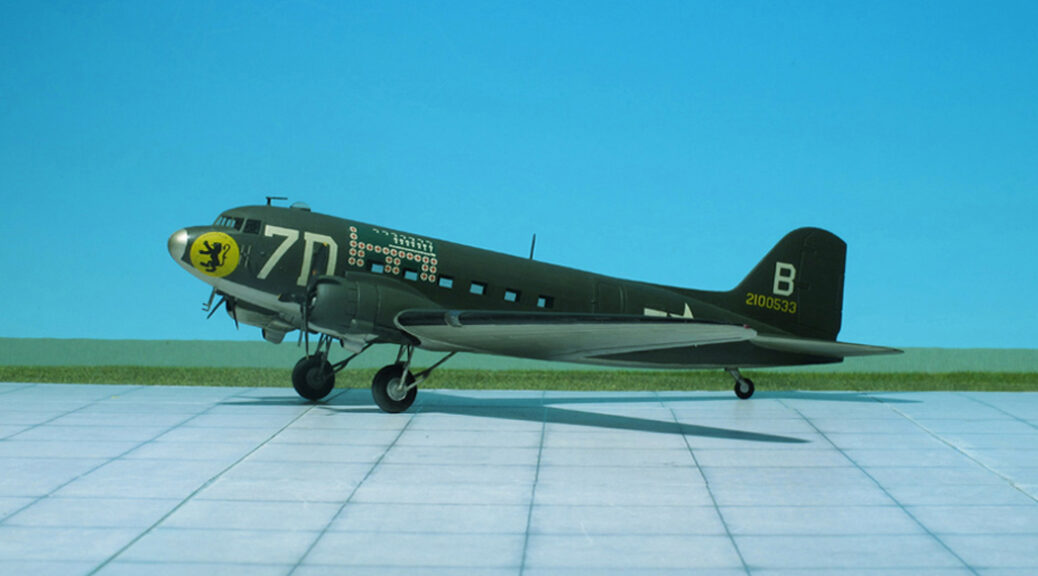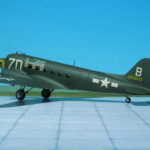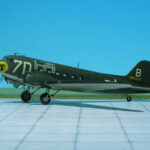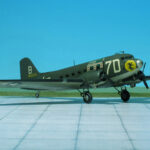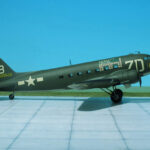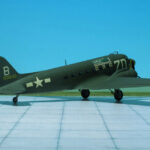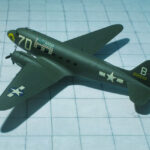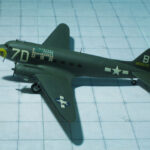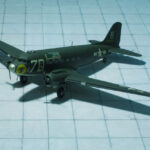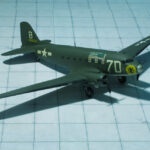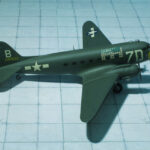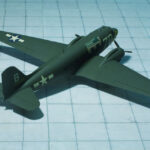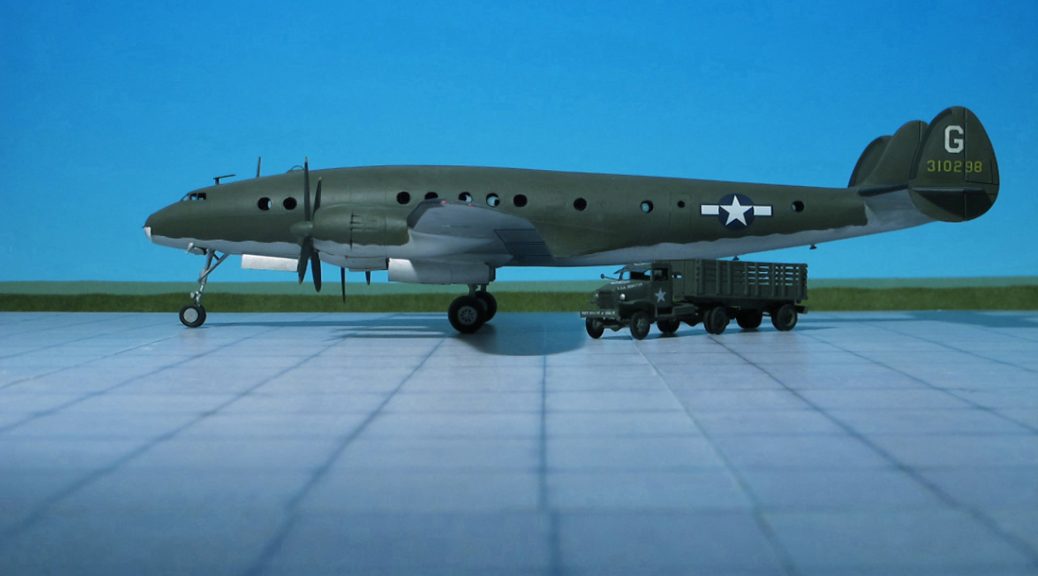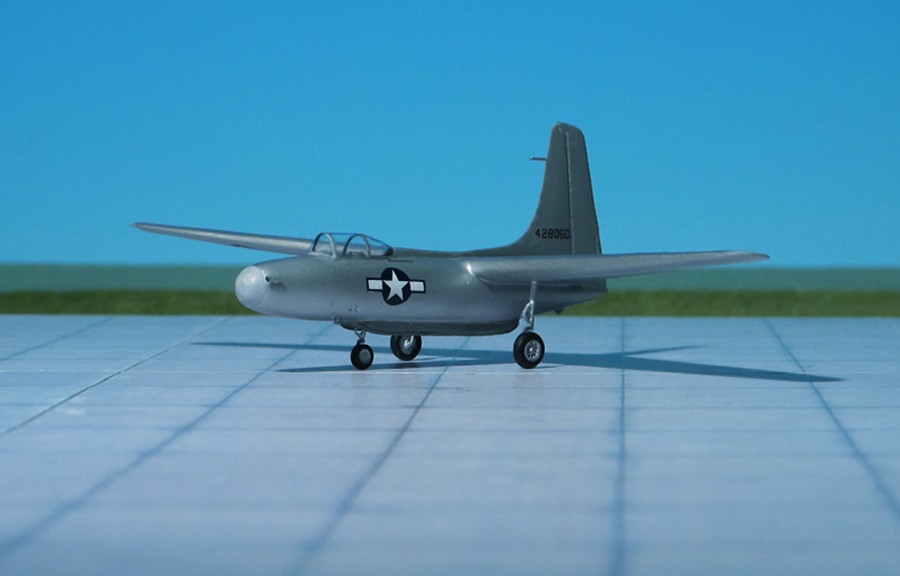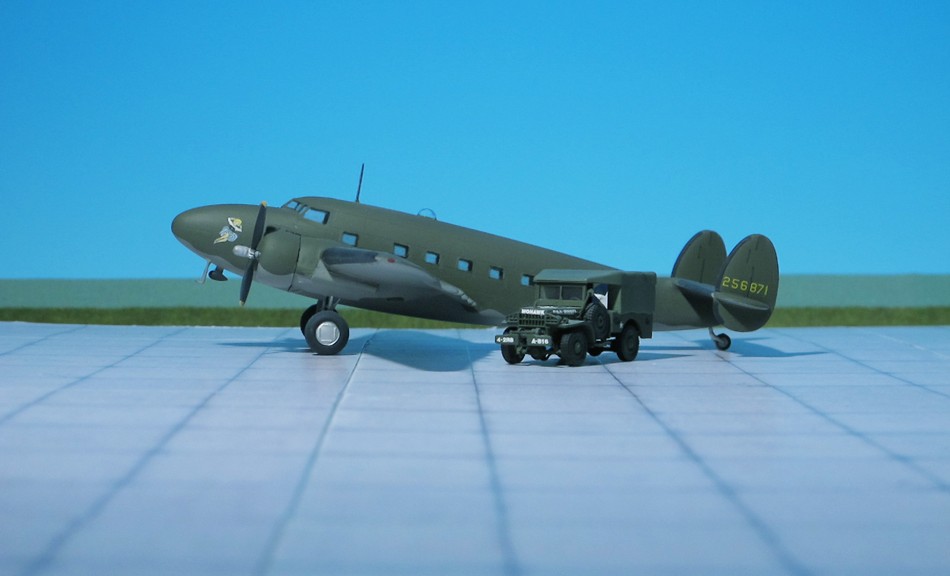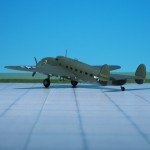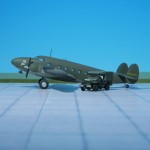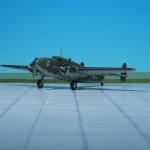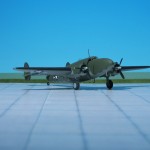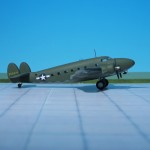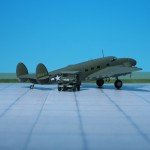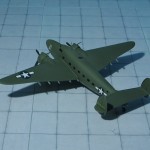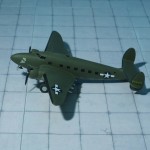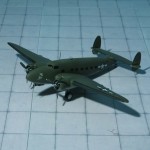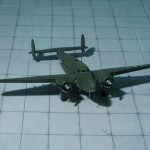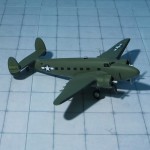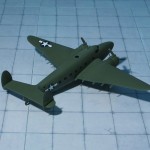TYPE: Transport, Troop carrier
ACCOMMODATION: Crew of four plus 29 troops
POWER PLANT: Two Pratt & Whitney R-1830-90 Twin Wasp radial engines, rated at 1,200 hp each
PERFORMANCE: 224 mph at 10,000 ft
COMMENT: The Douglas C-47 Skytrain or Dakota (RAF, RAAF, RCAF, RNZAF, and SAAF designation) was a military transport aircraft developed from the civilian Douglas DC-3 airliner. It was used extensively by the Allies during WW II and remained in front-line service with various military operators for many years.
The C-47 differed from the civilian DC-3 by way of numerous modifications, including being fitted with a cargo door, hoist attachment and strengthened floor – along with a shortened tail cone for glider-towing shackles, and an astrodome in the cabin roof.
During World War II, the armed forces of many countries used the C-47 and modified DC-3s for the transport of troops, cargo, and wounded. The U.S. naval designation was Douglas R4D. About 10,174 aircraft were produced in four US factories.
The specialized C-53 Skytrooper troop transport started production in October 1941 at Douglas Aircraft’s Santa Monica plant. It lacked the cargo door, hoist attachment, and reinforced floor of the C-47. Only 380 aircraft were produced in all because the C-47 was found to be more versatile.
The C-47 was vital to the success of many Allied campaigns, in particular, those at Guadalcanal and in the jungles of New Guinea and Burma, where the C-47 and its naval version, the R4D, made it possible for Allied troops to counter the mobility of the light-traveling Japanese Army. Possibly its most influential role in military aviation, however, was flying “The Hump” from India into China. The expertise gained flying “The Hump” was later used in the Berlin Lift, in which the C-47 played a major role until the aircraft were replaced by Douglas C-54 Skymasters.
In Europe, the C-47 and a specialized paratroop variant, the C-53 Skytrooper, were used in vast numbers in the later stages of the war, particularly to tow gliders and drop paratroops. During the invasion of Sicily in July 1943, C-47s dropped 4,381 Allied paratroops. More than 50,000 paratroops were dropped by C-47s during the first few days of the D-Day campaign also known as the Invasion of Normandy, France, in June 1944. In the Pacific War, with careful use of the island landing strips of the Pacific Ocean, C-47s were used for ferrying soldiers serving in the Pacific theater back to the United States.
About 2,000 C-47s (received under Lend-Lease) in British and Commonwealth service took the name „Dakota“, possibly inspired by the acronym “DACoTA” for Douglas Aircraft Company Transport Aircraft.
The C-47 also earned the informal nickname “gooney bird” in the European theatre of operations. Other sources attribute this name to the first aircraft, a USMC R2D—the military version of the DC-2—being the first aircraft to land on Midway Island, previously home to the long-winged albatross known as the gooney bird which was native to Midway
After World War II, thousands of surplus C-47s were converted to civilian airline use, some remaining in operation in 2012, as well as being used as private aircraft (Ref.: 24).
